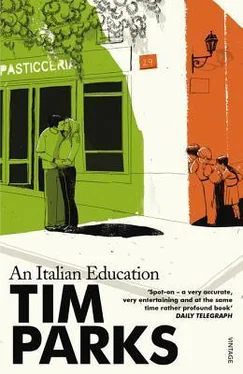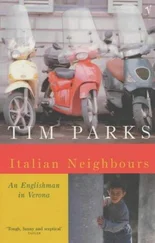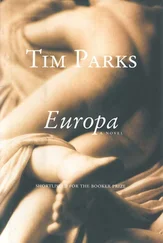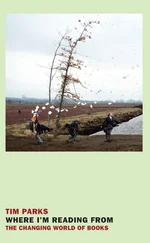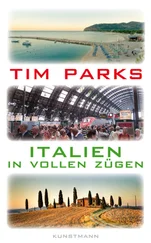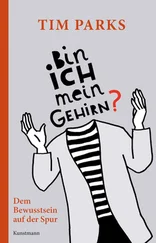Tim Parks - An Italian Education
Здесь есть возможность читать онлайн «Tim Parks - An Italian Education» весь текст электронной книги совершенно бесплатно (целиком полную версию без сокращений). В некоторых случаях можно слушать аудио, скачать через торрент в формате fb2 и присутствует краткое содержание. Год выпуска: 2012, Издательство: Random House UK, Жанр: Современная проза, на английском языке. Описание произведения, (предисловие) а так же отзывы посетителей доступны на портале библиотеки ЛибКат.
- Название:An Italian Education
- Автор:
- Издательство:Random House UK
- Жанр:
- Год:2012
- ISBN:нет данных
- Рейтинг книги:5 / 5. Голосов: 1
-
Избранное:Добавить в избранное
- Отзывы:
-
Ваша оценка:
- 100
- 1
- 2
- 3
- 4
- 5
An Italian Education: краткое содержание, описание и аннотация
Предлагаем к чтению аннотацию, описание, краткое содержание или предисловие (зависит от того, что написал сам автор книги «An Italian Education»). Если вы не нашли необходимую информацию о книге — напишите в комментариях, мы постараемся отыскать её.
Tim Parks focuses on his own young children in the small village near Verona where he lives, building a fascinating picture of the contemporary Italian family at school, at home, at work and at play. The result is a delight: at once a family book and a travel book, not quite enamoured with either children or Italy, but always affectionate, always amused and always amusing.
An Italian Education — читать онлайн бесплатно полную книгу (весь текст) целиком
Ниже представлен текст книги, разбитый по страницам. Система сохранения места последней прочитанной страницы, позволяет с удобством читать онлайн бесплатно книгу «An Italian Education», без необходимости каждый раз заново искать на чём Вы остановились. Поставьте закладку, и сможете в любой момент перейти на страницу, на которой закончили чтение.
Интервал:
Закладка:
But husbands and carabinieri aside, most mortals who want to see the baby have to wait, as I said, for la visione del bambino …
It works like this. At five to eight the nurses come and whisk the babies away. As soon as they are safely off in the service lift, the ward doors can be opened and the crowd admitted to visit the mother. That serves as a kind of appetizer, a teaser, a holding operation. Yes, he’s big, yes with lots of hair, and Nonno’s nose, yes, to a T… Then, as half past eight approaches, the visitors suddenly desert the ward and charge down the stairs to the nursery on the floor below, where the babies will now have been arranged in their see-through cots behind a great wall of glass… Here comes the visione .
Infected by the general excitement, Stefano, Marta and I hurry down, too. We push through the doors to the nursery. But for the moment the wall of glass is obscured from within by a venetian blind in dull institutional green. A crowd has formed, perhaps forty or fifty strong, all frantically waiting for the stroke of eight-thirty when the blind will be lifted and the miracle revealed. People mill impatiently in the limited space. A Donald Duck sticker warns us: DON’T KNOCK ON THE GLASS!
Then comes the raising of the blind. The crowd surges, as at a football match. They press against the glass. To see what? Four rows of pink- or blue-clad babies just about visible in their cots, if turned the right way round, and even then identifiable only by the large black numbers glued on the perspex. Ours is 16.
But people aren’t disappointed. The air is filled with oohs and aahs and coos and laughter and isn’t he just his uncle, isn’t he, isn’t he? — this of a tiny creature almost three yards away with his arm across his face. True, there’s a little frustration amongst those who can’t get to the front, or who have got to the front, but the number of the cot they’re after is way at the back; but that can be resolved by going off to find a nurse: Nurse, please can you move cot 12 to the front for a few minutes, please Nurse, please…
For my own part, I’m amazed at Marta and Stefano’s eagerness as they stare at cot 16 where little Stefania is facing the other way, so that all you can see is a surprisingly full head of dark hair. Then someone begins to complain that his video-camera has been jostled. He was trying to video his nephew (age twelve hours) through the glass when…
Such fanaticism! Such enthusiasm! Such a desire to worship, to devour the object of worship… It reminds me of when the wooden Madonna in the village church of Cologna Veneta starting crying. Rita and I went along to see the miracle but gave up because of the press of people outside, so many of them with expensive photographic equipment. And I realise now that access to the maternity ward is denied not just out of a sense of hygiene, but in order to enhance the notion of the child’s sacredness.
Stefano and Marta seem satisfied now. The nurse has turned the cot round and they can see that Stefania Angela has dark eyes and an old man’s face. We drive back. I let myself in just in time to catch a ringing phone. From three hundred miles away Rita’s mother demands: ‘Is it a boy?’
Sogni d’oro
Perhaps it is appropriate that the day after Stefania’s birth is also the day of the first condominium meeting. My own family increases and I myself am admitted to the larger family of the palazzina .
Turning off the main road that afternoon as I drive back from the three-to-four visiting spot, I notice that a road sign has been set up in the mud at the bottom of the development announcing that the slick question mark of asphalt that climbs the hillside to embrace Righetti’s various building sites is no longer to be known as Via Segheria. It has now been renamed Via delle Primule, Primrose Way. On the face of it this ought to be a good omen, redolent of youth and pleasure. But something niggles. What is it? Shakespearian warnings as to the unhappy consequences of hedonism — the primrose path of dalliance? Or a certain blind tweeness that as always unnerved me in such names as Buttercup Lane and Cowslip Cottage? Needless to say, this is not a street where anybody has ever seen a primrose.
The condo get-together is to be held at 9.30 p.m. in the flat below mine, the Cremoneses’. Here the mild Francesco and morose Francesca live with their only child, Gigi, aged, at that point, four and a half. The first thing that needs to be said about Gigi is that he is enormous. He’s a bufalo , as they say here, charging riotously around an apartment that is trying desperately hard to look old, if not antique, even before the whitewash is dry. The effect is achieved mostly by the tiles, which are a dark rust-red, immediately making the space look far smaller than it is, and above all dull, though Francesco is complaining that at least half of these tiles will have to be replaced since they are defective.
He draws us over to one side so that we can see. Basically, you have to crouch down in the doorway to the kitchen and look slantwise, your eyes at toddler height, between a chunky dark brown leather armchair and fat soft sofa. In this position, and only in this position, the light from an old-fashioned candelabra affair above, all chains and brass arms and gloomy glass beads, catches the rust-red-floor in such a way as to reveal that the glazing on many of the tiles is indeed broken and pitted…
Everybody shakes their head and agrees they’ll have to go. Fondi di magazzino , Silvio says knowingly, meaning, warehouse leftovers. But this interpretation presents Francesco with the alarming prospect that there may not be a sufficient number of good tiles left to replace those that are defective. Perhaps this colour isn’t being produced any more. Did Righetti pass off the very last tile of this type on him?
Mario, who has just arrived — stout, solid, businesslike — announces that he has decided to change all the doors in his apartment because the wood is such poor quality. A litany begins: electrical fittings, mixer taps, shutter catches… Since a builder must always be anathema no sooner than one has bought from him, I propose a toast: that Righetti’s child, when it arrives, be a little daughter. ‘ Cattivo! ’ they all shout, which is to say, ‘Unkind!’ or to a child, ‘Naughty!’ But everybody is smiling. After all, they all have maschietti . Let Righetti eat his heart out over a girl.
Running round the sofa, Gigi knocks a lamp off a low table. Francesca shouts at him. ‘ Smettila! ’ Stop it! Despite the accident, the blond and chubbily handsome Gigi continues to rush around. Half-heartedly Francesco suggests that the boy, his son, might like to go to bed, an idea that nobody else picks up in the general fussing to see if the lamp is broken. Nor is the notion proposed again as we finally arrange ourselves around the table to talk. At ten-fifteen Gigi continues to whoop in and out of the kitchen, helping himself from the fridge.
Where is my Michele, Silvio’s wife, Sabrina, asks. How on earth am I managing alone? When I reply that Michele is in bed, others at the table show a mixture of awe and concern.
‘You have left him alone in bed at only two and a half?’
I point out that it’s late for a little boy, and I am just about to go on to say that his bedtime is seven o’clock, when I remember that there is no word or expression to translate ‘bedtime’ into Italian. There is something coercive about the notion of a ‘bedtime’. It suggests that there comes a moment when parents actually force their little children to go to bed and will not take no for an answer, something unthinkable in these more indulgent climes. In explanation, I have to say that Michele ‘habitually goes to bed at seven o’clock’, which gives quite a different impression, and Francesca in particular marvels at what a wonderful little boy my Michele must be hurrying off to his bed so early, not realising that I had to pin the chap down for half an hour or more while I sang to him and told stories and said that Mummy would be back very soon, until finally he got more bored than I was and tired of all the crying he’d done and fell asleep. On more than one occasion I have heard such behaviour described by Italians as cruelty.
Читать дальшеИнтервал:
Закладка:
Похожие книги на «An Italian Education»
Представляем Вашему вниманию похожие книги на «An Italian Education» списком для выбора. Мы отобрали схожую по названию и смыслу литературу в надежде предоставить читателям больше вариантов отыскать новые, интересные, ещё непрочитанные произведения.
Обсуждение, отзывы о книге «An Italian Education» и просто собственные мнения читателей. Оставьте ваши комментарии, напишите, что Вы думаете о произведении, его смысле или главных героях. Укажите что конкретно понравилось, а что нет, и почему Вы так считаете.
